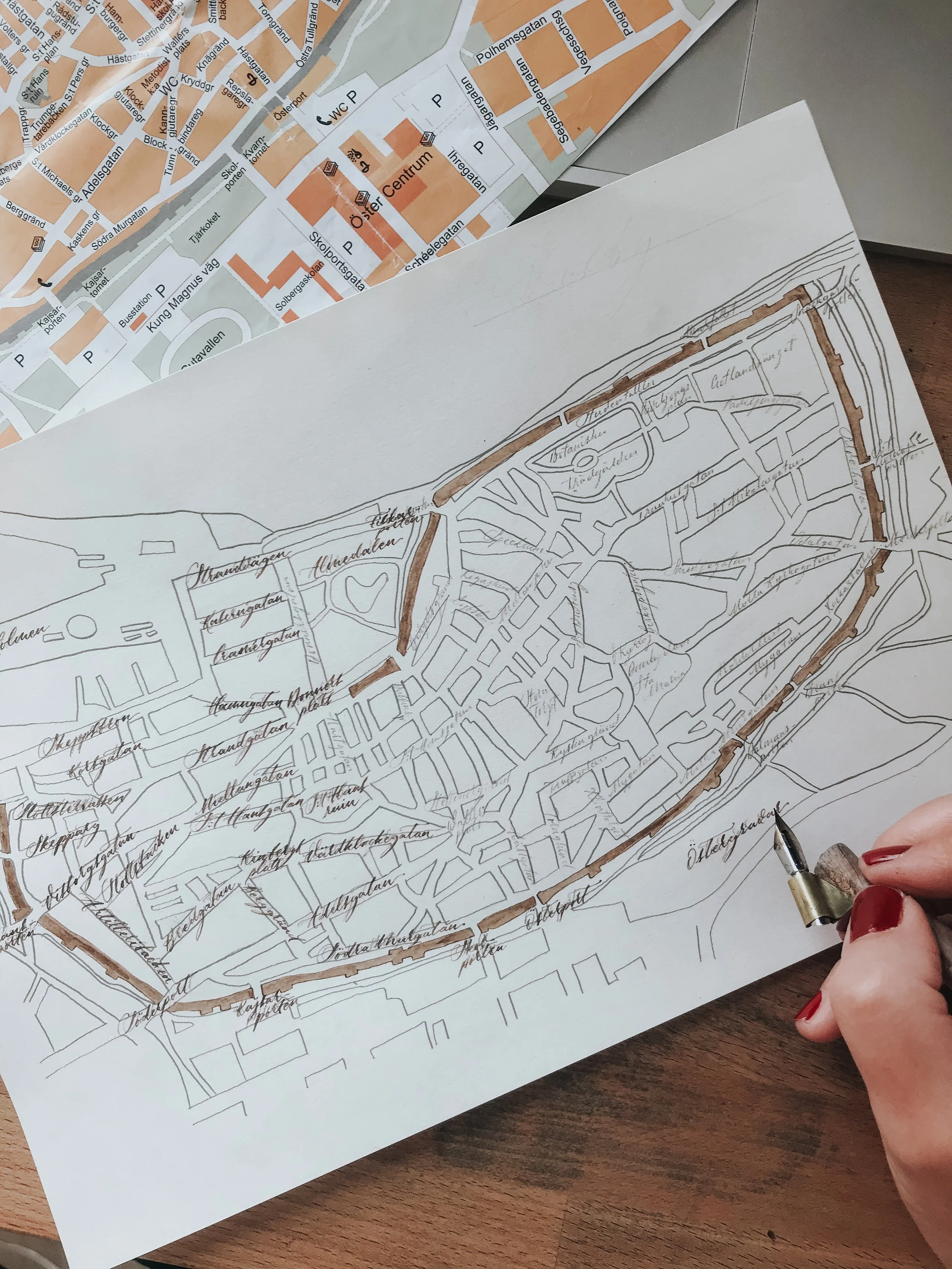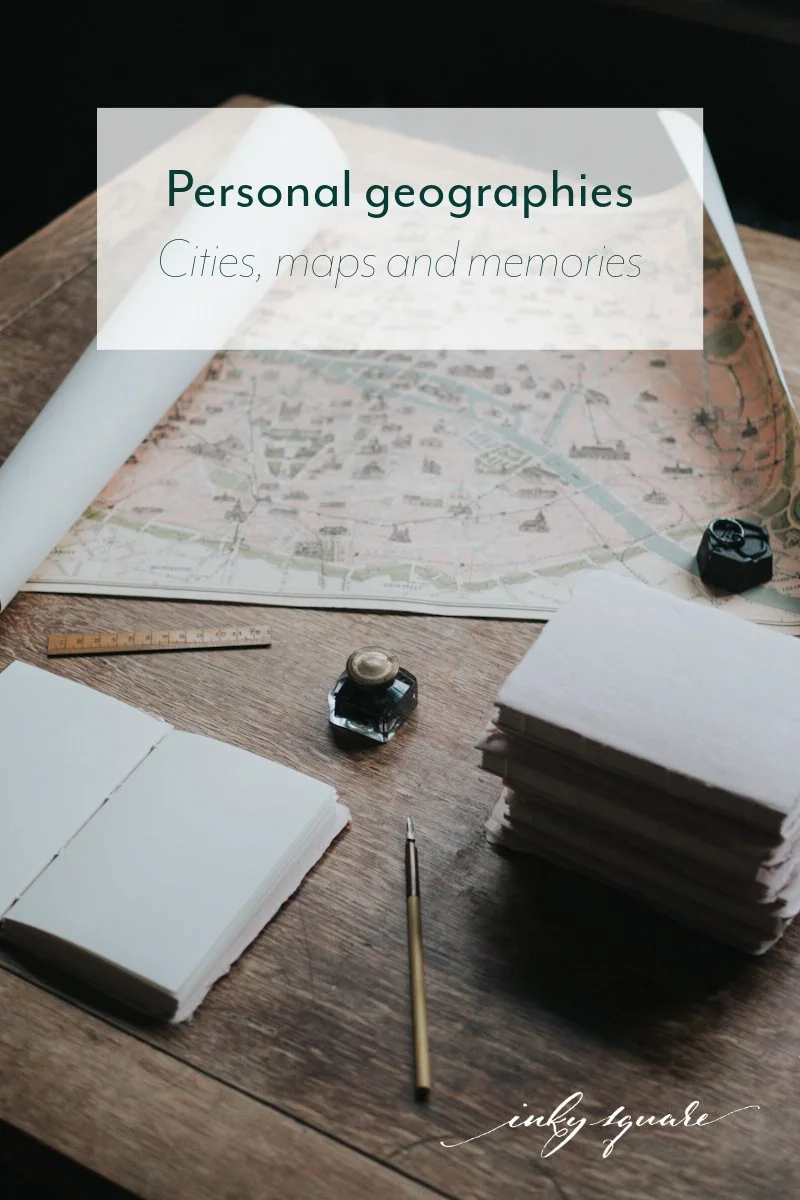Personal geographies: cities, maps and memories
I’ve recently taken up ice skating. I knew where the ice rink was of course, and I’d gone past it, probably many times, but I’d never actually been there. Two months after that first visit, I now walk to the rink two or three times a week. The walk is becoming part of my routine. But the first couple of times, it felt like revisiting places from the past, assembled in a new way, from a new perspective.
There was the charity where I volunteered for a couple of years when I first moved to Oxford. There was Oxford Castle to the right, where I spent a lot of time when I worked on the project to turn the prison and castle buildings into the multi-use site they are today. There was the college where my late husband worked, where I also once took a photography evening class, long ago, when it involved black and white film and time in a darkroom.
These are places I have been going to, or near, since those times, but they have all been demoted, at some point over the years, from their primary status in the landscape of my daily life.
When I first moved to Oxford, I lived in the north of the city. I commuted by train to university, and later worked on the southern edge of the city centre. I experienced the city on a north-south axis. There were places, even in the city centre, that I would hardly ever walk through. A few years later we moved east, I changed jobs, and the axis of my daily routes turned.
No two people have the same experience of a place. We build our own inner maps, made up of first impressions, memories, and the stories we’ve been told. And those maps keep evolving. If we stay in a place, the map changes as we become more familiar with some streets, change our habits, accumulate more embodied experiences of the streets, paths and buildings, even as they too change over time. And if we stay away, our memories, as we retell them, reshape them, as memories do.
When my husband and I went back to the beautiful Swedish city of Visby fourteen years after our first visit, we were puzzled over the location of a particular square. We remembered going for a drink there one evening, but not where it was on the map, and were surprised we hadn’t just come across it. A few days into our stay, it suddenly clicked: it was, in fact, the square on which our hotel stood. We hadn’t recognised it because it played a different role in this new holiday, because we’d approached it at a different time, in a different way, because our memories had turned the square we remembered into something a little other than what it was.
One trick I like to play is to use my place memories to time travel. If you can recapture the first impression a place made on you, how it slotted into your mental map at the time, you can, a little like one of those optical illusions, make yourself see it as you saw it then, and feel the world rearranging itself around it. I do this sometimes in my local park. It is so familiar to me now, especially since pandemic daily walks, but it has gone through a series of incarnations over the last 25 years or so.
I write all this from the perspective of someone with no sense of direction and pretty poor visual memory and imagination. Perhaps it is different for others, but the point, really, is that it is different for everyone.
Even distances, which surely should be reliable enough to be stable and measurable, seem to change. My local cinema felt pretty far away for many years, as everything in that part of town, simply because I usually gravitate to the opposite direction. But since I started going regularly, it has become very near. My husband and I also used to joke about our local shops being incredibly far away. That was more to do with how boring the walk to them was. But when lockdown caused me to use the pharmacy nearest my house, the walk became a rare, welcome outing, and the distance seemingly shortened accordingly.
There are some more significant changes too, like the meaning of the place where I scattered my husband’s ashes, chosen partly because of his own childhood memories. It is somewhere I rarely visited before he died, then went to very often, now less so. All these layers are still there, and are still being added to: the stories I was told, from before I was born, the later walks, the day I scattered the ashes, my feelings then and in the following months, the pandemic walks…
It is a real-life, personal, three-dimensional version of layering maps from different periods to see the evolution of a place (one of my favourite things to do when I studied historic conservation).
There’s a book I love and have mentioned before here: Kris Harzinski’s From Here to There, a selection from the author’s collection of hand-drawn maps. It is full of the variety and creativity of our idiosyncratic ways of understanding and experiencing places, and of examples of moments being captured in geographical form. Whether we ever put pen to paper, this process is forever ongoing – of drawing and reshaping the world around us, of making it part of our story.
I’ve long thought of developing some kind of bespoke map offering, to help people tell their own story of a place in map form, paper and ink. For now, I’d like to invite you to make your own. And if you need somewhere to draw it, I do already have the perfect blank canvas…










